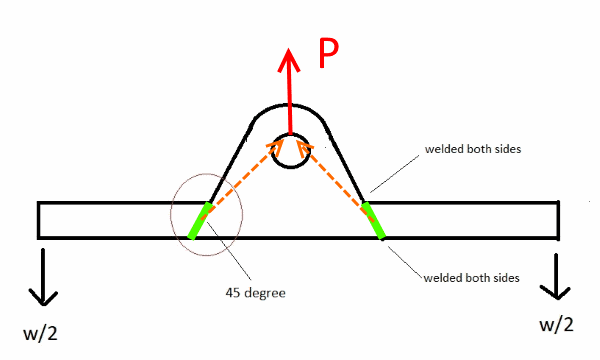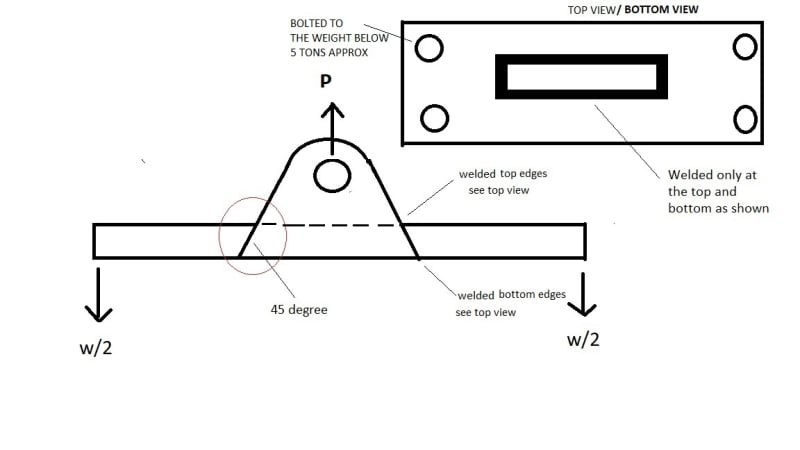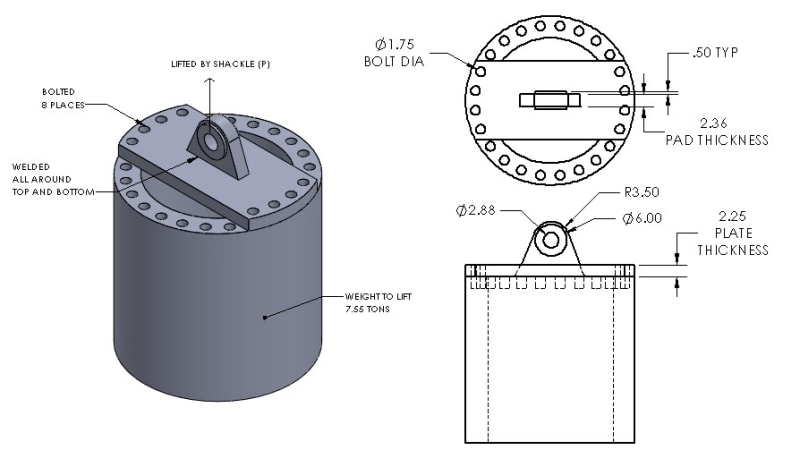Hanson Gill_1983
Mechanical
Dear All,
iam designing a lifting plate see attached picture. The pad eye is interfaced with plate at 45 degree and welded as shown.
I can calculate the double plane shear, bearing stress of the pad eye and the bending stress of the plate. But im not sure how to calculate the stresses acting at the welded joints, and the shear, bearing stress for the 45 deg angled profile.
Please any lead would be much appreciated. Thanks.
Regards,
HANSON
iam designing a lifting plate see attached picture. The pad eye is interfaced with plate at 45 degree and welded as shown.
I can calculate the double plane shear, bearing stress of the pad eye and the bending stress of the plate. But im not sure how to calculate the stresses acting at the welded joints, and the shear, bearing stress for the 45 deg angled profile.
Please any lead would be much appreciated. Thanks.
Regards,
HANSON


![[idea] [idea] [idea]](/data/assets/smilies/idea.gif)

